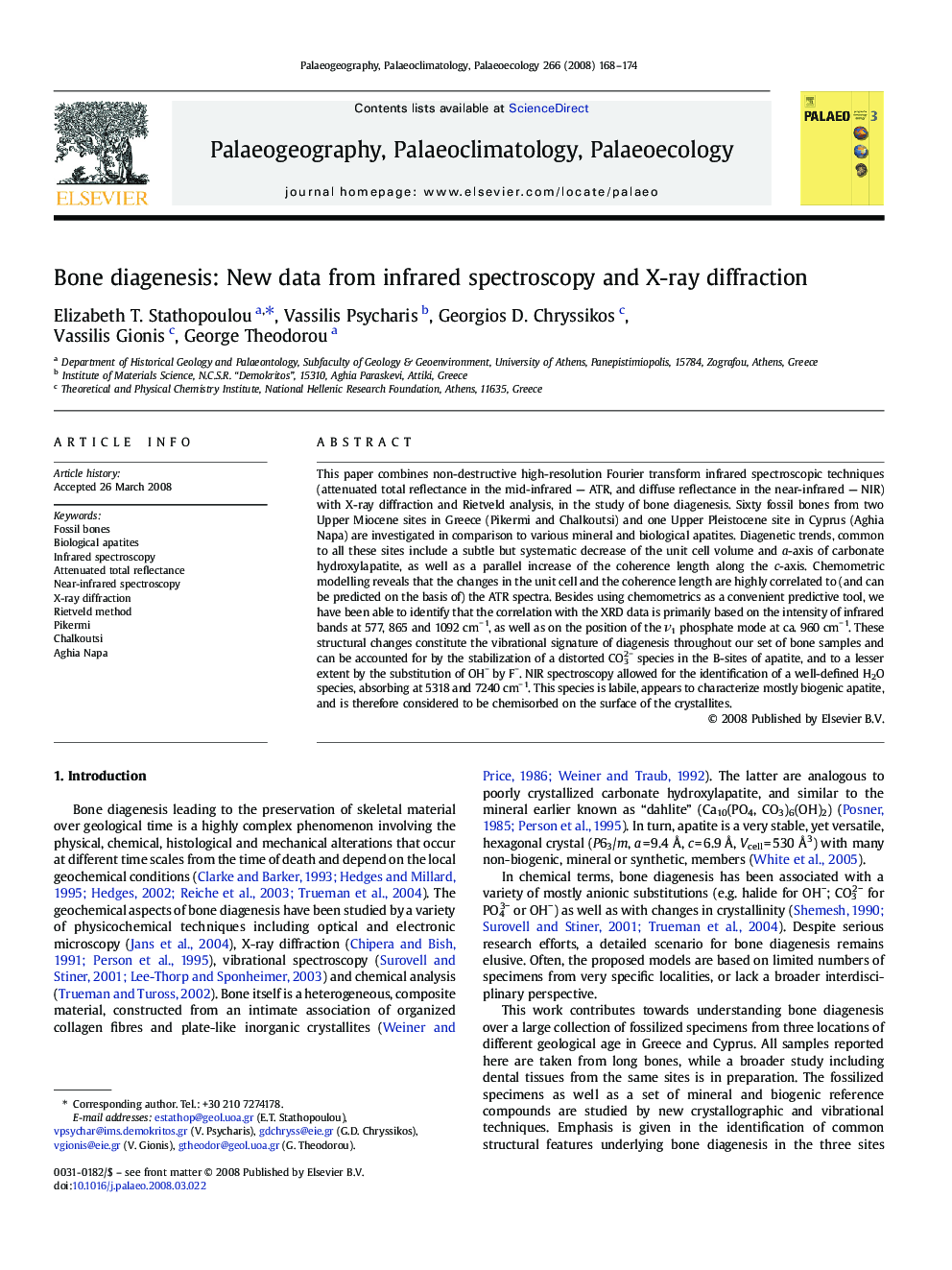| Article ID | Journal | Published Year | Pages | File Type |
|---|---|---|---|---|
| 4468441 | Palaeogeography, Palaeoclimatology, Palaeoecology | 2008 | 7 Pages |
This paper combines non-destructive high-resolution Fourier transform infrared spectroscopic techniques (attenuated total reflectance in the mid-infrared — ATR, and diffuse reflectance in the near-infrared — NIR) with X-ray diffraction and Rietveld analysis, in the study of bone diagenesis. Sixty fossil bones from two Upper Miocene sites in Greece (Pikermi and Chalkoutsi) and one Upper Pleistocene site in Cyprus (Aghia Napa) are investigated in comparison to various mineral and biological apatites. Diagenetic trends, common to all these sites include a subtle but systematic decrease of the unit cell volume and a-axis of carbonate hydroxylapatite, as well as a parallel increase of the coherence length along the c-axis. Chemometric modelling reveals that the changes in the unit cell and the coherence length are highly correlated to (and can be predicted on the basis of) the ATR spectra. Besides using chemometrics as a convenient predictive tool, we have been able to identify that the correlation with the XRD data is primarily based on the intensity of infrared bands at 577, 865 and 1092 cm− 1, as well as on the position of the ν1 phosphate mode at ca. 960 cm− 1. These structural changes constitute the vibrational signature of diagenesis throughout our set of bone samples and can be accounted for by the stabilization of a distorted CO32− species in the B-sites of apatite, and to a lesser extent by the substitution of OH− by F−. NIR spectroscopy allowed for the identification of a well-defined H2O species, absorbing at 5318 and 7240 cm− 1. This species is labile, appears to characterize mostly biogenic apatite, and is therefore considered to be chemisorbed on the surface of the crystallites.
